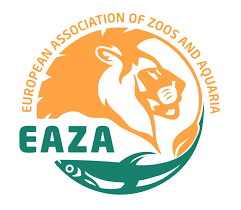
On Monday, 9 May, the first 2022 Bearded Vulture releases into the wild took place! As part of LIFE GypConnect, the project team released the two young vultures on a rocky cliff in the heart of the Cévennes National Park. This event marked the 10th release on the Grands Causses territory in France as part of the reintroduction project.
Selecting the captive-bred Bearded Vultures
Every year, the Bearded Vulture Captive Breeding Network, coordinated by the Vulture Conservation Foundation (VCF) on behalf of EAZA’s EEP (Bearded Vulture EEP), works alongside multiple partners to ensure the best breeding results for the species and support conservation initiatives. Alex Llopis, who is the Bearded Vulture EEP’s Coordinator, allocates chicks to reintroduction and restocking projects depending on the breeding season’s results (availability of chicks, sex ratio, genetics, etc.) and the needs of the different projects. This year, the Grands Causses will receive two young Bearded Vultures. One vulture comes from Ostrava Zoo in the Czech Republic and the other from Asters breeding centre in Haute-Savoie.
Preparing the birds for release
When the vultures reached around 90 days old, they arrived at the release site. Ahead of their release, the project team equipped them with identification rings and bleached some of their feathers to be able to identify them in the wild. They also fitted them with GPS transmitters, which allow the team to follow the birds’ movements after they fledge and track their behaviour in the wild. This monitoring tool is essential as it provides insights that help inform conservation measures, like tackling key threats and rescuing birds in a timely manner when necessary.
Engaging the local community

Awareness and engagement among local communities play a vital role in reintroduction efforts. Before their release, the team briefly presented the birds to the public at the Camping La Cascade in Salvinsac (commune of Meyrueis).
Children from the schools of St-Enimie and Lanuéjols also shared their beautiful Bearded Vulture drawings and selected the names of the two birds – Rei del Causse and Roc. Alexandre Vigne, the first Vice-President of the Parc national des Cévennes (PNC) sponsored Rei del Causse and Gilles Vergely, the Director of the Maison des Vautours, sponsored Roc.
Releasing the two young Bearded Vultures


After the presentation, it was finally time to release the vultures. So, a team from PNC, League for the Protection of Birds and Parc naturel régional des Grands Causses began heading to the rocky cliff to release the two vultures in the hacking platform.
After closing the electric fences that prevent predators from entering the enclosure, the technical team withdrew. Until the vultures fledge in about a month’s time, an attentive team will monitor their daily progress from afar without disturbing the vultures. They will carefully observe and record everything – wing beats, interactions, movements and feeding – to make sure the birds evolve well.
Method of releasing Bearded Vultures
The hacking method involves releasing captive-bred chicks into an artificial nest that resembles a nest vultures would have had in the wild. Placing them in a suitable habitat enables vultures to acclimatize to the natural environment for the coming weeks before they take their first flights. With this technique, the nestlings can associate the place where they are released with the area of hatching so that when they reach breeding age, which is around 8-10 years old, they select these places to breed. When Bearded Vultures are young, they tend to travel vast distances and explore new regions, but once they become sexually mature, they tend to select areas close to where they hatched to breed.
Update on the progress of the birds
Since then, a project team has been keeping a close watch over the birds. From 6 am to 8 pm, the team monitors their every movement and behaviour from afar to help determine the vultures’ progress and state of health. It seems the birds are healthy and are evolving well!
Roc and Rei feed and hydrate enough, maintain their plumage regularly and adequately interact with each other and other wildlife around them. Once they flap their wings around 300 times per day, they will be strong and ready to take their first flight into the wild – we wish them the best!
The LIFE GypConnect project

Led by the League pour la Protection des Oiseaux (LPO), the LIFE GypConnect project aims to establish a breeding population of Bearded Vultures in the Massif Central and Department of the Drôme. Releasing captive-bred Bearded Vultures into the wild at sites such as the Parc Naturel Régional des Grands Causses, Parc Naturel Régional des Baronnies Provençales and Parc Naturel Régional du Vercors will create a core population that will connect the two populations of the species in the Alps and Pyrenees. To facilitate movements between the new population and the Alpine and Pyrenean populations the LIFE GYPCONNECT team is creating a network of supplementary feeding stations, and tackling threats such as poisoning, and collision and electrocution with the electricity infrastructure.








